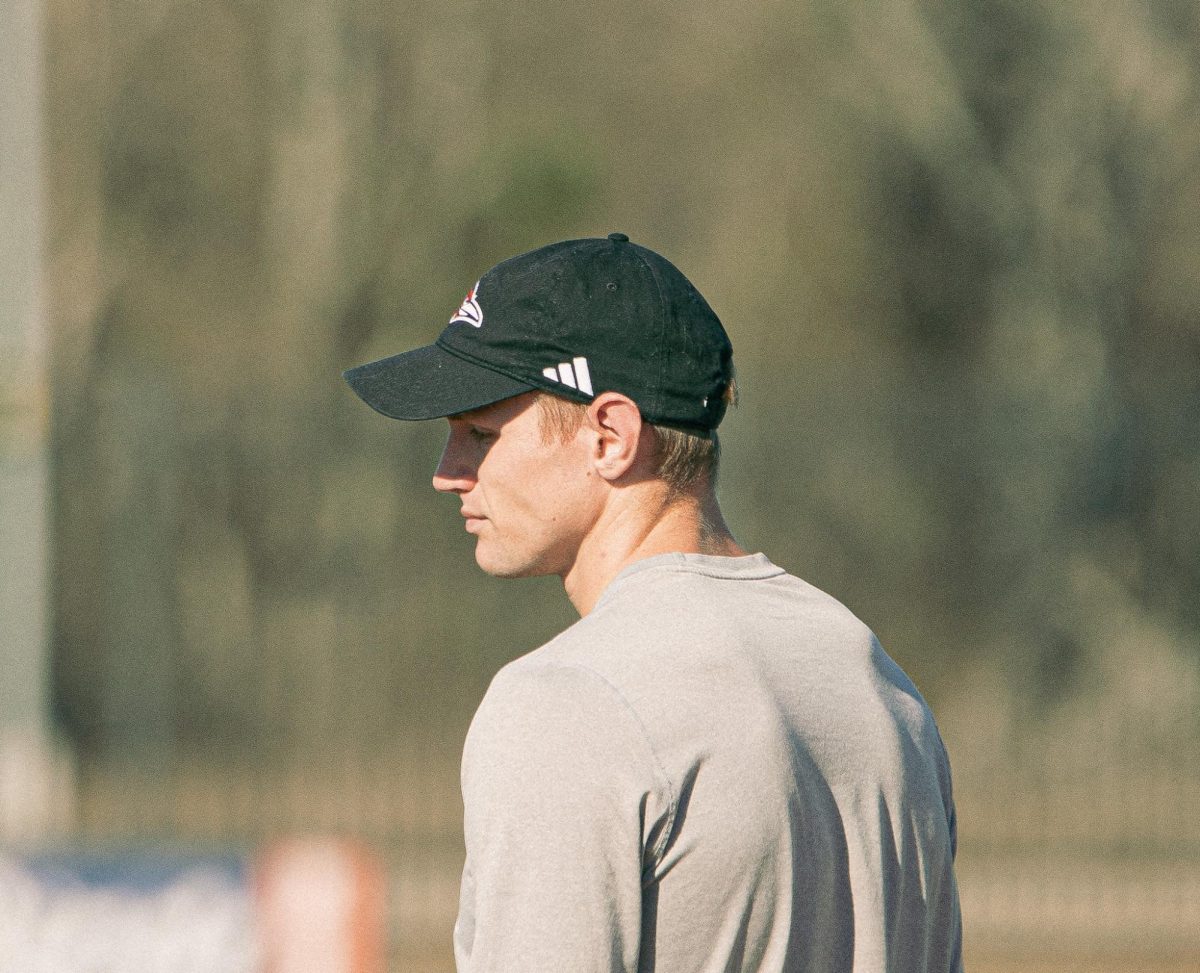South African native Christiaan Le Roux came to UTSA in 2021 and has made headway in his long-jumping career since then. Earning a spot as one of UTSA’s top five performers in program history, along with a top 40 track & field national rank and becoming a three-time conference champ, Le Roux has proven himself exceptional on the track & field team.
Hailing from Afrikaanse Hoër Seunskool, a school notorious for producing rugby athletes, the former Affie grew up in an area far different from and much smaller than UTSA.
“Athletics as a whole has given me a lot more opportunities and a lot more insight into how the world works than just what I was used to previously,” Le Roux said. “It was very sheltered where I’m from and very narrow, and you don’t see a whole lot outside of it. But, now, I get a little bit more perspective at UTSA.
“You meet a lot of new people that have different views and different perspectives than you, and that kind of has helped me grow as a person myself because you want to grow in your sport, as well as grow as a person outside of your sport. Meeting new people has helped me with that.”
To be able to leave your home country and travel to the other side of the world to pursue both a degree while competing as an athlete at a collegiate level is not easy but Le Roux has learned to prioritize the most important things to him.
“It’s hard to maintain the three different lifestyles of being a student, being an athlete and then your social life afterwards,” Le Roux said. “If you focus on your academics and your sport, you are left with very little time for your personal life, and if you focus more on your personal life and your sport, you have less time for academics and so on and so forth. So I always try to make time for personal life, but right now, while in college, the main goal is to be a student first and an athlete second.”
The challenges of being a student-athlete largely revolves around a balanced life. Student-athletes need to balance academics, and sports all while finding the time for a personal life. There are both mental and physical tolls that the body takes on during this balancing act but this is what separates a student from an athlete. A determined person will endure because this is the path that they have chosen, at least this is the path that Le Roux has chosen.
“There’s definitely times when I feel like I spread myself a little bit thin. It’s rough and it’s pretty overwhelming, but it is the life we chose, and that’s kind of just how it is; we deal with it,” he added.
While many people tend to focus on what their bodies look like, especially during this time of year with bathing suit season quickly approaching, Le Roux chooses to focus on his weight, but for different reasons. As a student-athlete, he must redirect his focus to what his body can do for him and how he can manipulate it to do what he needs.
“A lot of us, excluding the throwers, want to be super light for our events because the lighter you are, the better you can perform,” Le Roux pointed out. “Out of season, we bulk up a couple pounds to get a little bit bigger, and we don’t worry too much about what we’re eating. In season, you kind of want to lose a lot of the weight that you gained but at the same time keep the power and strength that you built up in the off season.”
To achieve his goals he closely watches his diet both on and off season, whether it be carb loading or cutting back and including more foods into his diet containing micronutrients. Regardless, he takes his training day-by-day and revises his mindset so that he can successfully make it through his spring season.
“Usually on Mondays we have a sprint session. Tuesday is for the jumpers.We have short approach jumps, so instead of taking your entire approach, we shorten it to 10 to 12 steps maximum,” Le Roux says of his weekly regiment. “Taking a jump helps with takeoff technique and landing technique. That way you’re not rusty by the time you actually get to a competition. Wednesdays for the jumpers are full approaches, so that’s getting your actual full approach in but not actually taking a jump, just feeling it out to see where you’re at. Thursdays are treatment days [such as] little bike sessions to just get moving. Fridays — if we’re not competing — are a plyometric day, so like some form of jumping, not necessarily in the pit, but just something off the pit, like in the grass or something like that to adjust your body to being able to jump because it kind of takes a little toll on your body, so doing smaller jumps helps your body adjust to being able to jump at a high speed.”
Building up his physique is only half the battle. His mind is the muscle that never quite gets a break, but Le Roux has clearly learned how to morph his perspective to be positive.
“If you’re not happy with your performance, it’s very easy to completely break it down and just think that there’s nothing good about it,” Le Roux said. “But a lot of times, you also have to be in the mindset of ‘What I did was not as good as I would have liked, but I did still do some things correctly.’ That makes it a little bit easier to actually look at it for longer and be a little bit more motivated and not get discouraged.”
With a mindset like that, it’s no wonder Le Roux has rightfully become a track star.










